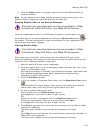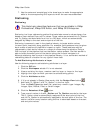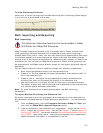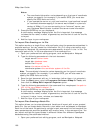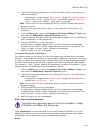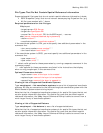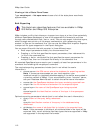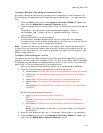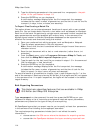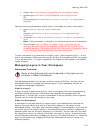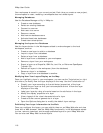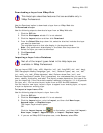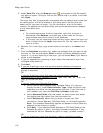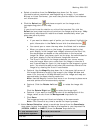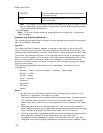Working With GIS
113
To Export Multiple Files Using the Command Line
All export command lines of this type begin with xmapexport in the command line.
All parameters are separated by a single space and parsed with -- on the command
line.
1. From the Start menu, point to Programs>DeLorme>XMap 6>Tools, and
then click the XMap Bulk Importer-Exporter option.
2. Type the parameters into the command line. An example of the format would
be:
xmapexport --source-server=localhost\delormemapping --source-
db=database_test --output-file-file=C:\gisdata\states.shp --source-
layer=states
3. Press the ENTER key on your keyboard.
A confirmation message displays after the file is exported; the message
includes the file name, number of geometries, and the time it took for the file
to export (in days, hours, minutes, and seconds).
Note To send the results of a command to a logfile, type '>path\filename.log 2>1'
at the end of the command. Results and errors will be sent to the logfile and will not
appear in the command line. If no path is specified, the logfile will be created in the
default target directory.
To Export Files Creating an .ini File
This option works on a single file basis using the parameters described in previous
sections. You can create the initialization file (.ini) with a text editor such as Notepad
or Wordpad. All parameters are separated by a return in the .ini file. The name and
path of the .ini file are referenced in the command line.
1. Open your preferred text editing program, such as Wordpad or Notepad.
2. Type the following export parameters in the text document:
• source-server=the SQL server where the database for exporting resides
• source-db=the OpenSpace database from which the layers are being
exported
• output-file=the file format and extension for the exported layers
• source layer=the name of the OpenSpace layer being exported
OR
sourcelayerid=the identification number of the layer in the OpenSpace
database
The following parameters are optional:
• query=name of the query being referenced
OR
queryid=identification number of the query in the database being
referenced
• attributes=the name of the attribute field to include in the exported
layer
Note If t
his parameter is left blank, all attribute fields in the layer will
be exported.
3. Save the text document with an .ini extension (rather than a .txt extension).
4. From the Start menu, point to Programs>DeLorme>XMap 6>Tools, and
then click the XMap Bulk Importer-Exporter option.



